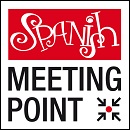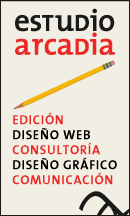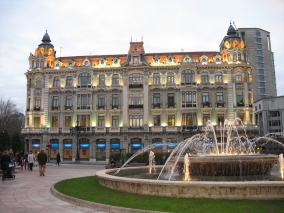Spanish schools and accommodation to study Spanish in Spain
Recent posts
Last schools
introduced
introduced
0 Accommodation

1 Spanish schools

Learning Spanish in Oviedo. The tourist guide to study your Spanish course.
General Information. 224,000 inhabitants. 532 kilometres to the north of Madrid. Capital of the Autonomous Community of Asturias, of medieval origin (8th century), with a well-conserved old quarter rich in historical buildings. It is the administrative, commercial and historical-artistic centre of the region. It is situated between the Nalón River and the Nora River. The built-up area stands at 227 metres above sea level, the highest point being Mount Picayu (709 metres). Oviedo was founded by two monks, Máximo and Fromestan, in the year 761. The University of Oviedo comprises three campuses, located in Oviedo, Gijón and Mieres, respectively. It was one of only 10 universities that existed in Spain during the 19th century. Oviedo is a very attractive place to study Spanish with many language schools offering a wide range of courses.
Surrounding Areas. Balneario de Las Caldas, an 18th century spa (8 kilometres); Gijon (31 kilometres), a coastal city with magnificent beaches; Cangas de Narcea, with rambling routes set amid beautiful countryside; Parque Nacional Picos de Europa (180 kilometres), a National Park in the Picos de Europa mountain range.
World Heritage Site. Various monuments located in Oviedo and the Kingdom of Asturias were declared World Heritage Sites by UNESCO in 1985, although this list was extended in 1988. The monuments in question are: San Miguel de Lillo, a 9th century pre-Romanesque chapel; Santa María del Naranco, a church and former palace of King Ramiro I; the Cámara Santa de Oviedo situated in the Cathedral, the ‘Holy Chamber' which serves as repository for the Oviedo's relics, such as the Cruz de los Ángeles (the Cross of the Angels on the municipal coat of arms), the Cruz de la Victoria (the Victory Cross on the flag of the Principality), the Agate Casket (Cofre de las Ágatas) and the Holy Shroud (Santo Sudario), similar to the shroud which covered Christ after his death. The UNESCO declaration also includes the Basílica de San Julián de los Prados and the Fuente de Foncalada, a drinking water fountain built in the 9th century, and the only surviving pre-Romanesque architectural work designed for public use.
Main Sights. The Cathedral, built on the site of an 8th century temple; El Fontán, a beautiful porticoed square which was built over a pond, the reason why it had to be reconstructed; and the monuments with World Heritage Site status mentioned in the previous section. The monuments are a major attraction for the many students who decide to study Spanish in Oviedo.
Culture. ECO Oviedo (beginning of September), an electronic music festival held in the Carlos Tartiere stadium; the Asturias Museum of Fine Arts (Museo de Bellas Artes de Asturias) and the Archaeological Museum, which contains an important collection of Paleolithic pieces; the shows and performances presented at the Teatro Campoamor, a 19th century neo-Classical theatre which hosts the annual Príncipe de Asturias awards ceremony. The main concert venues are the Teatro Filharmónica and the Auditorio-Palacio de Congresos Príncipe de Asturias, which opened in 1999 and also serves as a conference hall.
Shopping. The best place for shopping in Oviedo is Calle Uría and the surrounding area. Other nearby streets which have gained popularity among shoppers are Gil de Jaz, Doctor Casal, Covadonga and Nueve de Mayo. In the latter-mentioned street you will find Centro Comercial Salesas, which, together with Los Prados and Parque Principado, is one of several shopping centres in Oviedo.
Gastronomy. For a light snack washed down with a glass of cider, head for Calle Gascona; as is traditional throughout the region, the cider is poured from a bottle held high overhead into a glass held at waist height, thus stimulating the bubbles. In the old quarter and in and around El Fontán there are numerous bars and restaurants. The bars on Calle San Bernabé are traditionally associated with wine drinking; one of the most well-known is Bar Montoto, where the wine is served in small tumblers and accompanied by delicious bollos preñaos (small bread rolls filled with chorizo sausage) which come straight from the oven. The most typical dish in Asturias is fabada (a slow-cooked bean stew with ham, salt pork and chorizo), and the desserts to look out for are arroz con leche (rice pudding) and carbayones (sweet puff pastries filled with a mixture of egg yolk and crushed almonds). There are some magnificent cheeses with designation of origin, and the region also boasts several restaurants with Michelin stars.
Sports. Besides an extensive network of sporting infrastructures, which includes municipal sports centres, swimming pools, tennis clubs and golf courses, the surrounding countryside also offers the opportunity to enjoy a range of outdoor activities, such as horse riding, trekking, climbing and various adventure sports that you can learn here. The Estadio Carlos Tartiere is the home of the Oviedo's football club, Real Oviedo, which has spent a total of 38 seasons in the first division.
Fiestas. Fiestas de San Mateo (mid-September); after a week and a half of concerts, bullfights and other celebratory activities in streets lined with refreshment stalls, these festivities reach their climax on Saint Matthew's Day (21st September) in the Plaza de la Catedral, where it is customary to buy paxarines (saffron-coloured figures made from breadcrumbs, flour and egg, which the locals use as a lucky charm for protection against storms). Other traditional events on this day include a High Mass, during which the Holy Shroud is blessed, and a picnic lunch in the centrally located Campo de San Francisco, Oviedo's largest public park.
Nightlife. Students who decide to study Spanish in Oviedo will discover a very active nightlife, thanks to the city's university atmosphere. Oviedo's nightlife is concentrated in the following city centre streets: Calle Mon, Calle San Isidro and Calle Oscura. Calle del Rosal and the street it joins up with, Calle Pérez de la Sala, make up another traditional bar crawling area, which attracts a predominantly young crowd. Calle Cimadevilla, a street which leads into the Town Hall Square (Plaza del Ayuntamiento), has numerous pubs, cider bars and the odd disco bar.
Surrounding Areas. Balneario de Las Caldas, an 18th century spa (8 kilometres); Gijon (31 kilometres), a coastal city with magnificent beaches; Cangas de Narcea, with rambling routes set amid beautiful countryside; Parque Nacional Picos de Europa (180 kilometres), a National Park in the Picos de Europa mountain range.
World Heritage Site. Various monuments located in Oviedo and the Kingdom of Asturias were declared World Heritage Sites by UNESCO in 1985, although this list was extended in 1988. The monuments in question are: San Miguel de Lillo, a 9th century pre-Romanesque chapel; Santa María del Naranco, a church and former palace of King Ramiro I; the Cámara Santa de Oviedo situated in the Cathedral, the ‘Holy Chamber' which serves as repository for the Oviedo's relics, such as the Cruz de los Ángeles (the Cross of the Angels on the municipal coat of arms), the Cruz de la Victoria (the Victory Cross on the flag of the Principality), the Agate Casket (Cofre de las Ágatas) and the Holy Shroud (Santo Sudario), similar to the shroud which covered Christ after his death. The UNESCO declaration also includes the Basílica de San Julián de los Prados and the Fuente de Foncalada, a drinking water fountain built in the 9th century, and the only surviving pre-Romanesque architectural work designed for public use.
Main Sights. The Cathedral, built on the site of an 8th century temple; El Fontán, a beautiful porticoed square which was built over a pond, the reason why it had to be reconstructed; and the monuments with World Heritage Site status mentioned in the previous section. The monuments are a major attraction for the many students who decide to study Spanish in Oviedo.
Culture. ECO Oviedo (beginning of September), an electronic music festival held in the Carlos Tartiere stadium; the Asturias Museum of Fine Arts (Museo de Bellas Artes de Asturias) and the Archaeological Museum, which contains an important collection of Paleolithic pieces; the shows and performances presented at the Teatro Campoamor, a 19th century neo-Classical theatre which hosts the annual Príncipe de Asturias awards ceremony. The main concert venues are the Teatro Filharmónica and the Auditorio-Palacio de Congresos Príncipe de Asturias, which opened in 1999 and also serves as a conference hall.
Shopping. The best place for shopping in Oviedo is Calle Uría and the surrounding area. Other nearby streets which have gained popularity among shoppers are Gil de Jaz, Doctor Casal, Covadonga and Nueve de Mayo. In the latter-mentioned street you will find Centro Comercial Salesas, which, together with Los Prados and Parque Principado, is one of several shopping centres in Oviedo.
Gastronomy. For a light snack washed down with a glass of cider, head for Calle Gascona; as is traditional throughout the region, the cider is poured from a bottle held high overhead into a glass held at waist height, thus stimulating the bubbles. In the old quarter and in and around El Fontán there are numerous bars and restaurants. The bars on Calle San Bernabé are traditionally associated with wine drinking; one of the most well-known is Bar Montoto, where the wine is served in small tumblers and accompanied by delicious bollos preñaos (small bread rolls filled with chorizo sausage) which come straight from the oven. The most typical dish in Asturias is fabada (a slow-cooked bean stew with ham, salt pork and chorizo), and the desserts to look out for are arroz con leche (rice pudding) and carbayones (sweet puff pastries filled with a mixture of egg yolk and crushed almonds). There are some magnificent cheeses with designation of origin, and the region also boasts several restaurants with Michelin stars.
Sports. Besides an extensive network of sporting infrastructures, which includes municipal sports centres, swimming pools, tennis clubs and golf courses, the surrounding countryside also offers the opportunity to enjoy a range of outdoor activities, such as horse riding, trekking, climbing and various adventure sports that you can learn here. The Estadio Carlos Tartiere is the home of the Oviedo's football club, Real Oviedo, which has spent a total of 38 seasons in the first division.
Fiestas. Fiestas de San Mateo (mid-September); after a week and a half of concerts, bullfights and other celebratory activities in streets lined with refreshment stalls, these festivities reach their climax on Saint Matthew's Day (21st September) in the Plaza de la Catedral, where it is customary to buy paxarines (saffron-coloured figures made from breadcrumbs, flour and egg, which the locals use as a lucky charm for protection against storms). Other traditional events on this day include a High Mass, during which the Holy Shroud is blessed, and a picnic lunch in the centrally located Campo de San Francisco, Oviedo's largest public park.
Nightlife. Students who decide to study Spanish in Oviedo will discover a very active nightlife, thanks to the city's university atmosphere. Oviedo's nightlife is concentrated in the following city centre streets: Calle Mon, Calle San Isidro and Calle Oscura. Calle del Rosal and the street it joins up with, Calle Pérez de la Sala, make up another traditional bar crawling area, which attracts a predominantly young crowd. Calle Cimadevilla, a street which leads into the Town Hall Square (Plaza del Ayuntamiento), has numerous pubs, cider bars and the odd disco bar.
© TEXT: SPANISH IN TOUR.
























